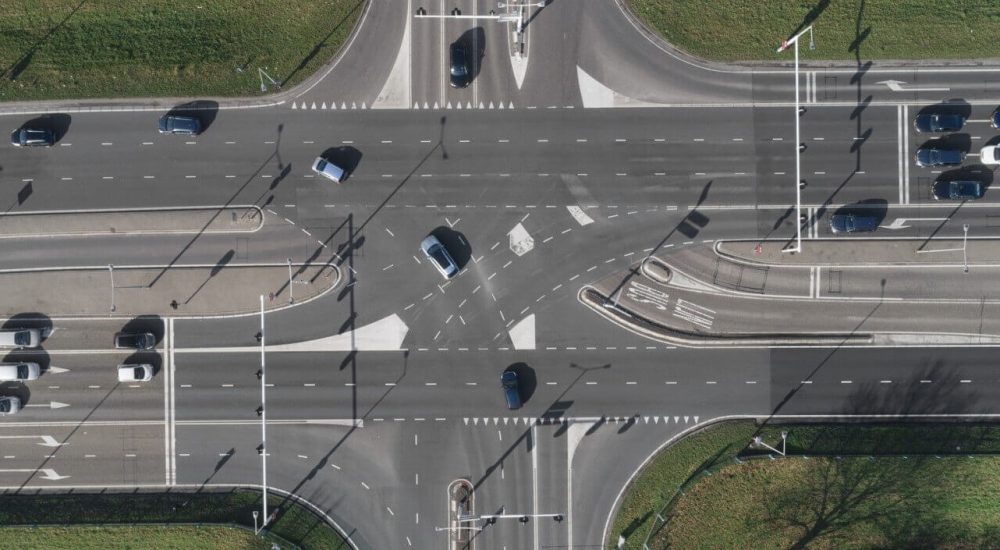What Does Yielding the Right of Way Mean?
“Right of way” is an important and fundamental traffic concept that can help avoid traffic accidents. Right of way refers to the set of rules that tells us when a driver should proceed through an intersection or other area, and when they must yield to another motorist (or a cyclist, pedestrian, etc.).
If you don’t quite understand what that means, it may be easier to explain through some everyday traffic scenarios that all drivers know and understand:
Simple Right of Way Situations:
- When a motorist arrives at a typical stop sign, any traffic coming from the left or right has the right of way, meaning they must come to a complete stop and wait until it is safe to cross (or turn). Once it is safe, the right of way becomes theirs and they may proceed.
- When at a four-way stop, whichever vehicle has been stopped and waiting the longest has the right of way to continue through the intersection. Once that vehicle is safely through the intersection, the right of way passes to the next car in chronological order based on when they first reached the stop sign. (If two vehicles reach a four-way stop simultaneously, the driver to the left yields right of way to the driver on the right, who proceeds through the intersection first.)
- When a motorist encounters a typical yield sign, any cross-traffic coming from the left or right will have the right of way. This means the motorist must stop and wait for these cars to move through the intersection before they have the right of way and are allowed to continue.
- When motorists encounter a stoplight, those facing the red light must come to a complete stop. Motorists facing the green signal have the right of way and are allowed to continue through the intersection. (Motorists who are facing a green light but making a turn, however, must yield their right of way to pedestrians using any adjacent crosswalks.)
- Pedestrians, being more vulnerable than someone inside of a vehicle, get the right of way in any crosswalk or shared roadway.
How Do I Yield the Right of Way?
“Yielding the right of way” is one of those terms that can sometimes make things sound more complex than they actually are. In a practical sense, yielding your right of way simply means that you’re stopping to let other traffic (or pedestrians) go first. Even if you’re unclear on how exactly the law applies to the concept in every situation, you’re most likely yielding your right of way multiple times (or should be) every time you operate a motor vehicle.
If you’re unsure what exactly the law says about right of way in specific situations, you can take an online or in-person driver’s training refresher course. Even if you feel fairly confident in your highway knowledge, it’s always good to keep on top of traffic laws and regulations, as they can change from time to time.
When the right of way is in doubt, the best approach is to just drive defensively and courteously. This often means yielding the right of way to others or stopping until you and another motorist can signal to one another and take turns proceeding through an intersection safely. Remember: yielding the right of way to someone else will rarely cause a traffic issue, whereas accelerating into an intersection or merging lanes when you do not have the legal right of way can result in serious accidents, damage to motor vehicles, injury, death, and even criminal liability.
Frequently Asked Questions (FAQs) About Right of Way
What Does It Mean to Yield the Right of Way?
When you yield the right of way, you are stopping or slowing your vehicle so that another motorist’s or pedestrian’s use of the roadway takes priority over yours. This can be legally mandated through stop and yield signs, traffic lights, signage, and traffic laws. It may also be something a driver does voluntarily in an uncertain situation, in the interests of safe and courteous driving. In plain English, yielding the right of way means waiting so that someone else can go first. (There is a second legal definition of “right of way” that has to do with access to property. The term may come up in trespassing cases, for example. This is unrelated to the phrase’s use in traffic law.)
In What Situations Must a Driver Yield the Right of Way?
A driver must yield the right of way whenever it is required by law. Often this will be made clear through stop signs, yield signs, traffic signals, and other signage. Other times, it is simply a matter of knowing the law before you get behind the wheel. For example, when someone is trying to merge lanes, the drivers already in that lane have the right of way over the car trying to merge or change lanes, even though there will be no signage to say so.
What Does the Yield Sign Mean?
You can think of a yield sign sort of like a “soft” stop sign. When approaching an intersection marked with a yield sign, you must slow down and check for any traffic coming from the left or right. If any cross-traffic is approaching, you must stop completely and give those other vehicles the right of way. If you can proceed along your path safely, however, you may do so without coming to a complete stop.
What Does It Mean to Yield to Traffic?
In the simplest possible terms, “yielding to traffic” just means waiting for other cars to go first. There are many specific traffic scenarios where you are legally obligated to yield to other traffic, but it can also be used as a defensive driving tactic whenever you reach an intersection or other roadway where you are unsure how to proceed. Yielding to others when it isn’t necessary can hold up traffic when done excessively but is less likely to cause an accident than claiming the right of way when you don’t legally have it.
What to Do When Another Driver Violates Your Right of Way
If you’ve been injured due to a motorist failing to obey legal right of way, you may be entitled to damages. Stevenson & Murray Attorneys at Law can assist you in developing a powerful legal strategy to deal with the Texas courts, stubborn insurance companies, and at-fault motorists. When you’ve been hurt by someone else’s negligence or wrongdoing, you have a legal right to seek compensation so that you and your family get the support you need to truly recover. Stevenson & Murray, with our intimate knowledge of Texas courtrooms and traffic laws, are here to help. Contact our offices today.

Get Help Today
Request a Free Consultation
"*" indicates required fields


